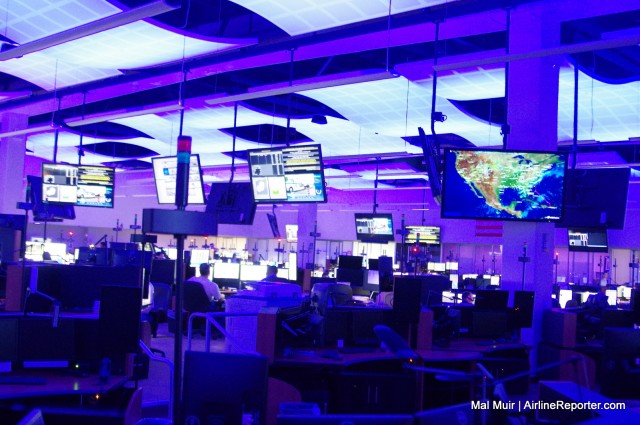
The Southwest Airlines NOC with screens showing airline operations
In May of this year, Southwest Airlines unveiled a new crown jewel at their Dallas Love Field headquarters: their Network Operations Control (NOC). If the employees are the heart of the airline, the brain that keeps the airline moving day in and day out is the NOC.
During Media Day, we were given a tour of the NOC — it almost felt like being in Batman’s lair.
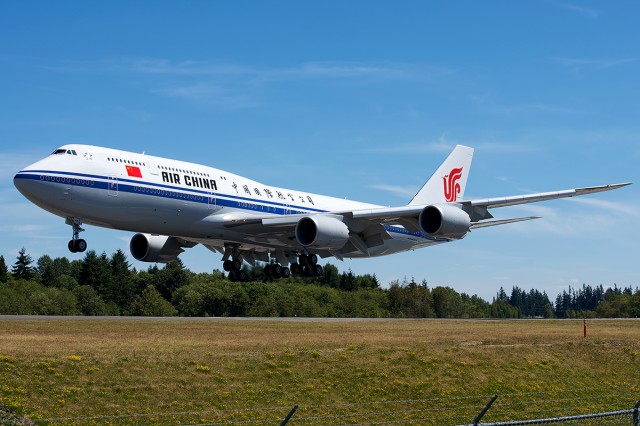
Air China’s first 747-8 completing its first flight – Photo: Bernie Leighton | AirlineReporter
Air China has taken delivery of their first 747-89L, making them the second operator of the 747-8 Intercontinental after Lufthansa.
Air China will operate the 747-8 on training flights from Beijing to Guangzhou’s Baiyun International Airport. The aircraft’s first international destination will be Frankfurt, with New York and Los Angeles both slated to gain service as more aircraft arrive.
Air China’s 747-8 is configured in four classes with 12 first class seats, 54 business class, 66 premium economy, and 233 economy seats. Economy class will offer between 32 and 33 inches of seat pitch, whilst Premium Economy will offer 38″. The aircraft will also feature onboard wifi.
The whole cabin was designed by famed Chinese designer Han Meilin. But it was odd that we didn’t get more information about the interior.
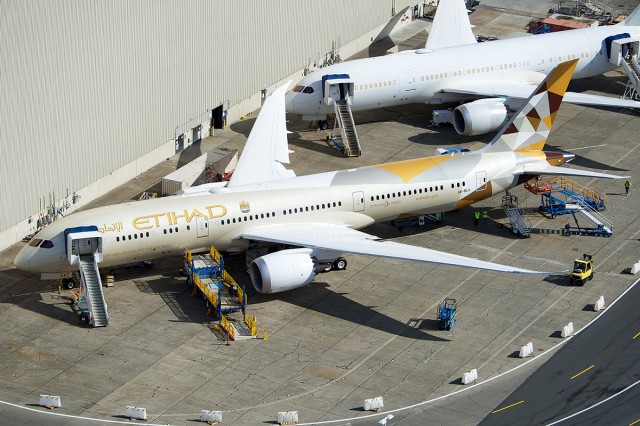
Aerial photo of Etihad Airways’ first 787-9 Dreamliner at Paine Field – Photo: Bernie Leighton | AirlineReporter
What a looker!
On Sunday night we were able to see the reveal of Etihad’s new livery in the darkness, but this photo not only lets us see it in light, but also from the air (doesn’t every plane/livery look better with an aerial view)?
Our Bernie Leighton had the opportunity to to get this shot, and his impression? He thought it was amazing, “The most distinguished looking 787.” Who am I to disagree? Now we just can’t wait to get a peek of that interior.
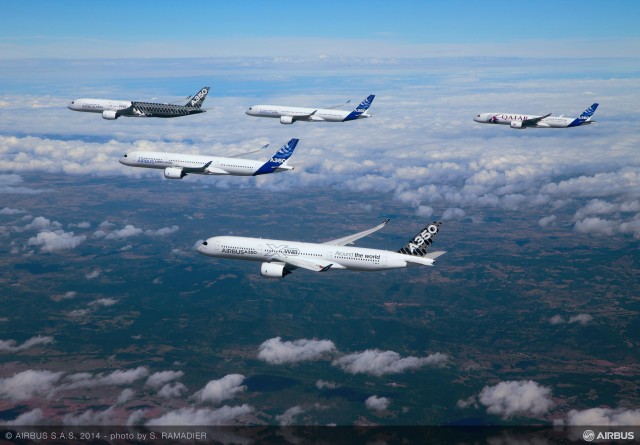
Five Airbus A350s flying in formation – Photo: Airbus
On September 30th, the Airbus A350 XWB received Type Certification from the European Aviation Safety Agency (EASA). What better way to celebrate than to fly five Airbus A350-900 in formation? We can’t think of a better way. Luckily for us, there’s photos and video (the video is found lower in the story) for us to enjoy!
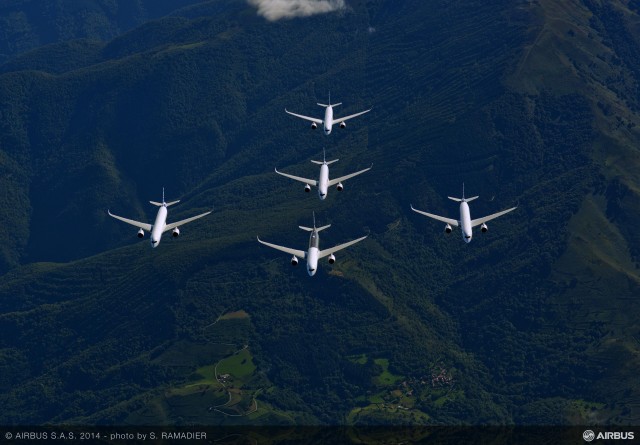
What’s better than one or two A350s flying in formation? Five of course – Photo: Airbus
’œReceiving the A350-900 Type Certification from EASA is a great achievement for Airbus and for all our partners who have contributed to designing, building and certificating this fantastic, new generation aircraft. The A350-900 is now ready to fly from the nest and be enjoyed by airlines and passengers,’ said Fabrice Brgier, Airbus President and CEO. ’œThe A350 XWB embodies many extra innovative technologies which make all the difference in passenger comfort and airline efficiency.’
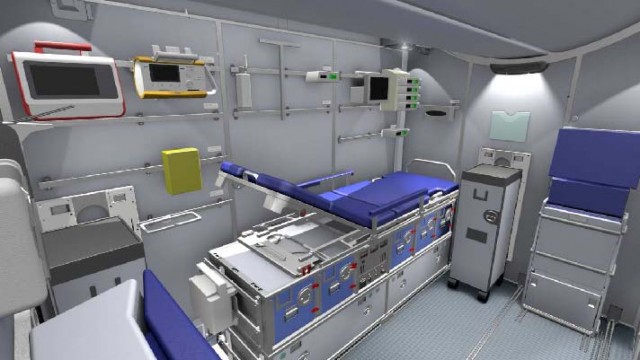
A rendering of the inside of Lufthansa’s Patient Transport Compartment, the “flying ICU” – Image: Lufthansa
Lets face it, nobody wants to need medical care while on board a plane. And yet, with a huge number of people traveling by air everyday, it’s inevitable that it will happen with some regularity. In fact if you travel by air regularly, you have probably heard the flight attendants ask over the PA if there is a “medical professional onboard.”
Any malady that can occur on the ground can happen in the air, and the altitude while on a commercial aircraft can even exacerbate certain medical conditions. That means that some people may be more likely to need medical assistance in the air than they do on the ground.
For German airline Lufthansa, there are about 3,000 passenger medical emergencies that occur on board each year. Of those, an average of 54 emergencies are serious enough that they require the flight to be diverted so that a patient can obtain urgent medical care. I recently had a chance to sit down with the airline and learn how they cope with these situations. Not only is the airline well prepared for any emergency that may arise in flight, they are also ready to treat those who need care before they board the aircraft.





